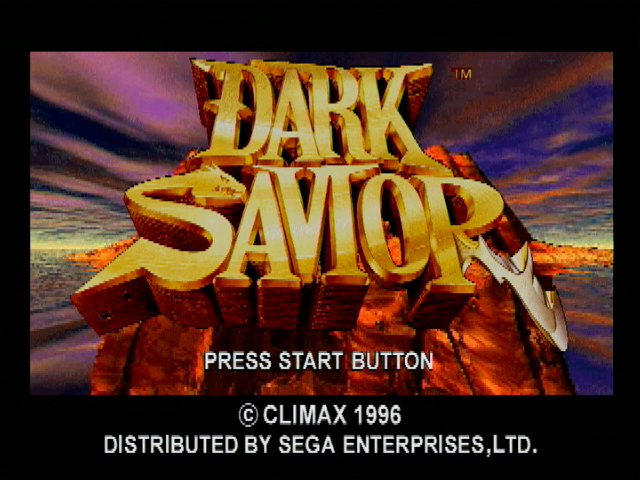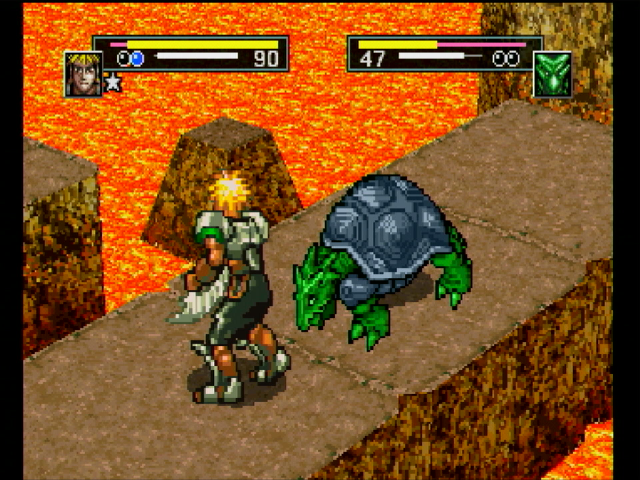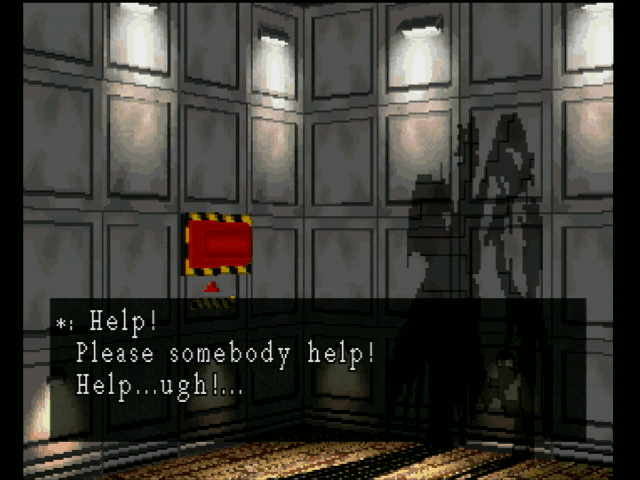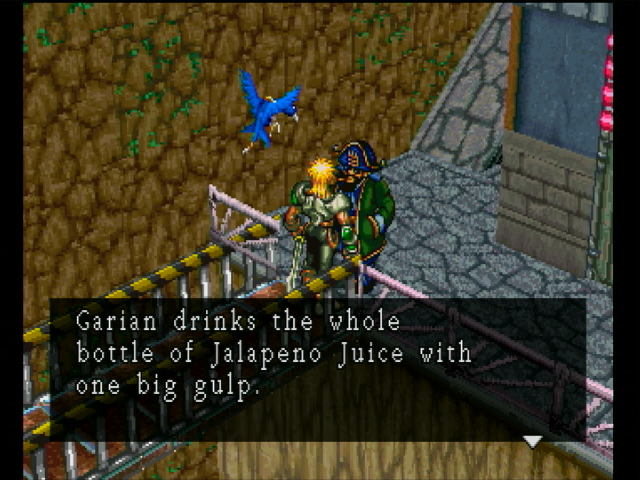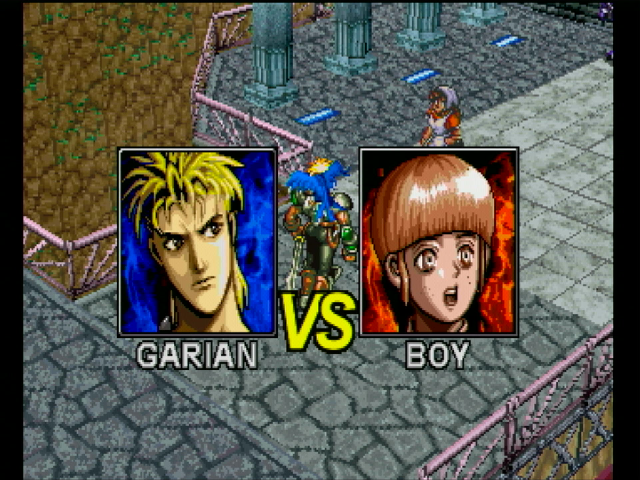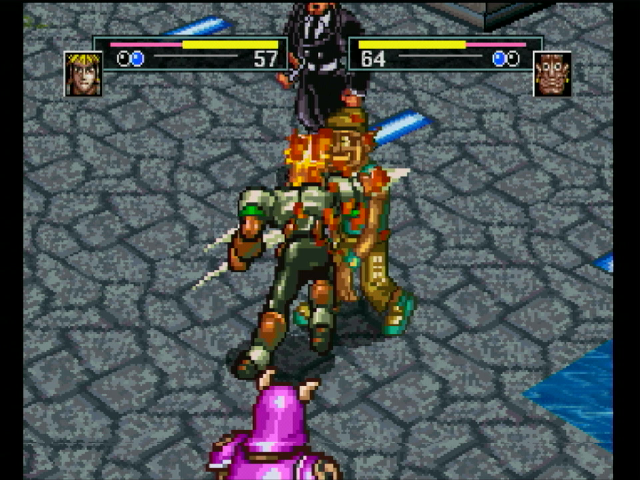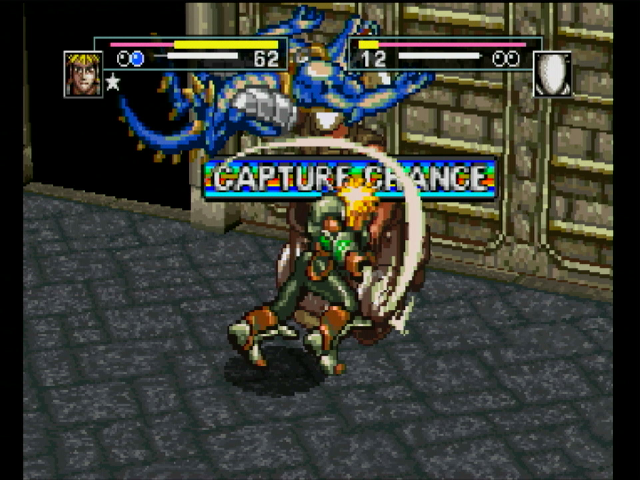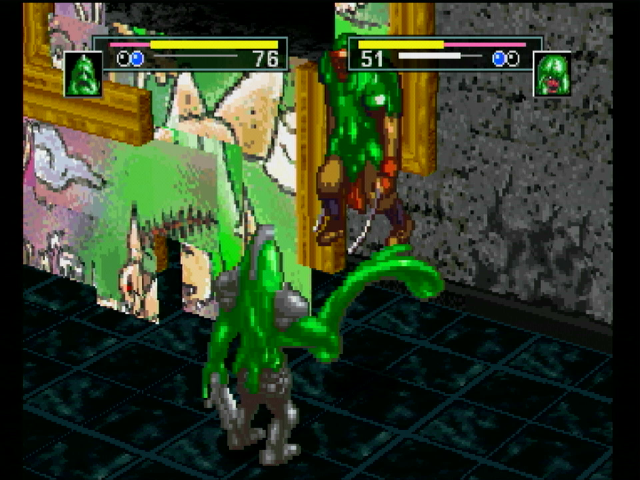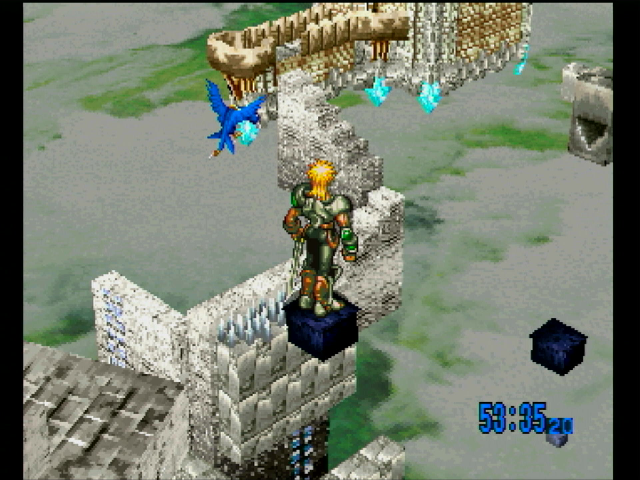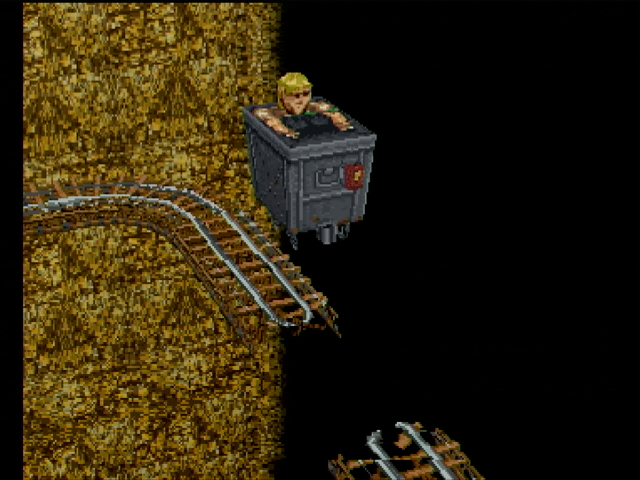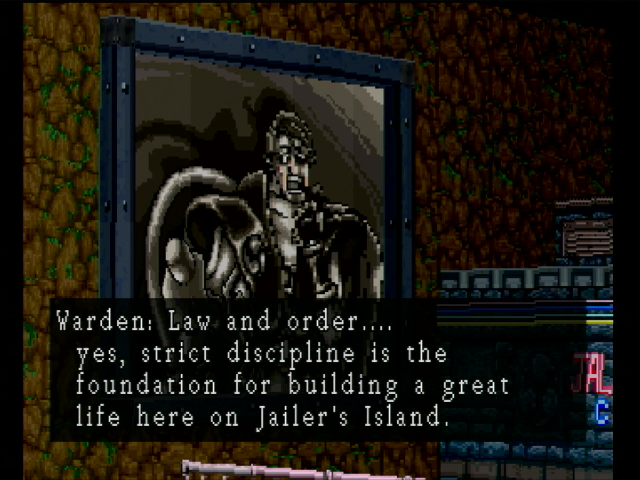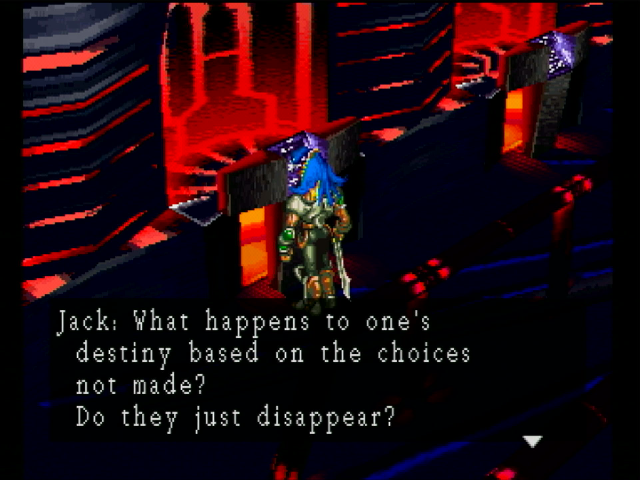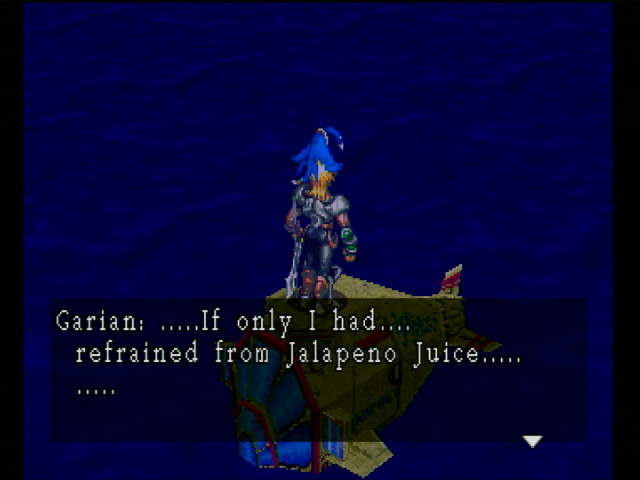Dark Savior – Climax Entertainment - 1996 - First time playing?: Yes!
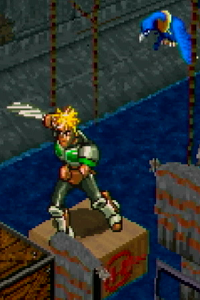 Ever play a JRPG and find yourself experiencing a sense of dread at every corner, questioning if the most miniscule diversions from the main plot will send you down the path to the bad ending, or if that character that died in a cutscene could have been saved if you did something differently? Our hero of today's review, Garian the bounty hunter and player character of Dark Savior, lives that at every moment. From the moment he gets up, both narratively and mechanically, there is always this sense of “what would have changed if I just got up on the other side of the bed this morning?” Even the smallest variations off course from the timeline can spiral into a butterfly effect leading to a near unrecognisable world.
Ever play a JRPG and find yourself experiencing a sense of dread at every corner, questioning if the most miniscule diversions from the main plot will send you down the path to the bad ending, or if that character that died in a cutscene could have been saved if you did something differently? Our hero of today's review, Garian the bounty hunter and player character of Dark Savior, lives that at every moment. From the moment he gets up, both narratively and mechanically, there is always this sense of “what would have changed if I just got up on the other side of the bed this morning?” Even the smallest variations off course from the timeline can spiral into a butterfly effect leading to a near unrecognisable world.
“Wow, MSX, this sounds dreadfully stressful.” Actually, Dark Savior is a delightful little game, filled with unique mechanics, a fascinating world and themes, excellent replay value and a cynical and dark setting contrasted with a load of dorky humour and charm that all make this game rather loveable, if extremely jank in many ways. Frustrating and unpolished it may be at times, but it's never so much for it to stop being engrossing and fascinating to experiment with, even if it was extremely exhausting.
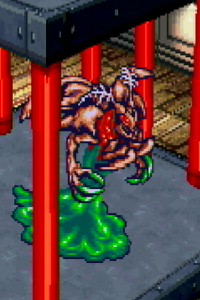 Honestly, I don't even know what genre Dark Savior is. Going into it I thought it was going to be an action RPG, since it has equipment and levelling up and that 90s fantasy anime aesthetic that defined the genre back then, but I only levelled up twice in my first playthrough and only once in all following playthroughs, which lets you know how little those mechanics actually play into the game as a whole. It's also a spiritual successor to the Mega Drive classic Landstalker, but to merely call it Landstalker 2 would fail to do this mad mishmash of muddled mechanics justice, as the similarities end with the similar art style and isometric gameplay. Dark Savior feels closest to an isometric puzzle platformer in terms of genre, akin to the likes of Head Over Heels or Knight Lore from the ZX Spectrum, C64 and MSX era of microcomputers, but it's also an isometric puzzle platformer with light RPG elements, combat that plays like a pre-Street Fighter one on one fighting game and monster collecting elements, which typically are not considered puzzle platformer standard to my knowledge. I'm all for experimental mixed genre games however, I love this kind of stuff, so this is only part of Dark Savior's charm and what makes it a unique experience to this day.
Honestly, I don't even know what genre Dark Savior is. Going into it I thought it was going to be an action RPG, since it has equipment and levelling up and that 90s fantasy anime aesthetic that defined the genre back then, but I only levelled up twice in my first playthrough and only once in all following playthroughs, which lets you know how little those mechanics actually play into the game as a whole. It's also a spiritual successor to the Mega Drive classic Landstalker, but to merely call it Landstalker 2 would fail to do this mad mishmash of muddled mechanics justice, as the similarities end with the similar art style and isometric gameplay. Dark Savior feels closest to an isometric puzzle platformer in terms of genre, akin to the likes of Head Over Heels or Knight Lore from the ZX Spectrum, C64 and MSX era of microcomputers, but it's also an isometric puzzle platformer with light RPG elements, combat that plays like a pre-Street Fighter one on one fighting game and monster collecting elements, which typically are not considered puzzle platformer standard to my knowledge. I'm all for experimental mixed genre games however, I love this kind of stuff, so this is only part of Dark Savior's charm and what makes it a unique experience to this day.
In events prior to the start of the game, Garian and his hunter comrades have successfully captured Bilan, a half-insectoid half-slime monstrous outlaw renowned for his sheer destructive power and ruthlessness. Garian is to accompany Bilan on the boat to Jailer’s Island where the monster is to be executed by carbon freezing. As you'd expect, Bilan didn't feel like dying that day so Garian woke up to the sounds of screams of agony and destruction from his cabin, alongside his avian companion called Jack. In all the chaos however, one of the first things he notes upon his rude awakening is a blue rose in his possessions, endemic to the prison island he has yet to visit. Why was it there? A souvenir from the future? Well, no time to dwell on that now, this ship isn't getting any less destroyed the longer you wait around mulling over the pretty flower in the midst of a massacre.
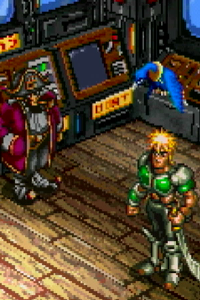 Time to get started on gameplay and time to get used to some unconventional controls. The isometric view likely isn't going to throw you off too much if you've played similar looking RPGs of the era, but being able to only move in four diagonal directions is likely more jarring. You'd better get used to diagonal inputs on the d-pad as if you simply press right on the d-pad it's a tossup as to if your pathfinding will have you move northeast or southeast. Garian can walk with the d-pad, run faster by holding down the C button, jump with the B button and swing his sword with the A button. Sword swings can be used to interact with the world such as by hitting switches or breaking open windows, as well as being used for combat of course. Garian is also capable of picking up and throwing many objects which can be used as makeshift platforms, weights for switches or keys for puzzle solving.
Time to get started on gameplay and time to get used to some unconventional controls. The isometric view likely isn't going to throw you off too much if you've played similar looking RPGs of the era, but being able to only move in four diagonal directions is likely more jarring. You'd better get used to diagonal inputs on the d-pad as if you simply press right on the d-pad it's a tossup as to if your pathfinding will have you move northeast or southeast. Garian can walk with the d-pad, run faster by holding down the C button, jump with the B button and swing his sword with the A button. Sword swings can be used to interact with the world such as by hitting switches or breaking open windows, as well as being used for combat of course. Garian is also capable of picking up and throwing many objects which can be used as makeshift platforms, weights for switches or keys for puzzle solving.
This intro will also end up determining what route you take for the rest of the game. Dark Savior has three main routes referred to as parallels that each have radically different storylines and different routes through levels and puzzles. The ship at the start of the game is referred to as “Parallel ?” by the save file and how quickly you complete it will be the deciding factor in what the plot of that story is. The longer you take, the more havoc Bilan will cause, which characters survive determining what direction the story goes in. Given that the controls take getting used to, in addition to the time limit being a strict 3-4 minutes for the other two parallels, your first playthrough is going to likely involve Bilan escaping but nonetheless heading directly to the prison island where it’s clear he’s seeking something other than execution, prompting Garian to follow him to the island and track him down. Don’t worry about being enroute for a “bad” ending with Dark Savior, the parallels are radically different enough that you’re expected to play through all of them one after another to properly complete it and get the full picture of what is happening and tying all these timelines together.
Before getting the full picture, you still may recognise some odd consistencies, such as the scene where a pirate captain doesn't let you into the residential district of the island unless you chug a glass of, uh, jalapeño juice. Yeah, Dark Savior has some weird censorship in the English localisation and this is perhaps the goofiest edit of the lot. It only gets sillier when this juice gets Garian in such a drunken state of mind from whatever that drink was spiked with that he nearly murders a child unprovoked due to intense hallucinations. Kinda dark? Nah, actually hilarious, the game even displays the standard battle intro announcing “GARIAN VS BOY” as a fake out to make it look like you're actually going to fight this child in a one on one duel. Dark Savior knows it's a video game and is able to play with the conventions of the medium and genre for both comedy and storytelling potential in order to create a story that only works in the video game medium, while also avoiding the more standard fourth-wall breaking that commonly comes with the territory, with this scene being one of the early introductions to the comedy potential, while also introducing other consistencies in Garian's characterisation between parallels, such as his guilt over past actions, specifically killing one of his own comrades before the events of the game as revealed in the intro. The scene ends with Garian regaining lucidity as blue roses rain from the sky and a mysterious scar is left on his face, another consistency across parallels.
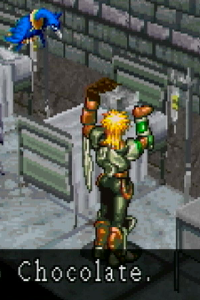 Now that you're on the prison island the game can begin properly. Dark Savior is a pretty linear game so there's not too much to explore, but it remains worth keeping an eye out for those hidden corners of maps thanks to the presence of trading items. There's no money for the prisoners of this island, so instead you purchase items via trading liquor bottles, porno magazines and uh, chocolate. Another instance of censorship there, in the Japanese original you traded cigarettes instead of chocolate. I say you purchase items with these, but more accurately I purchased a single item in this game, an equippable bracelet you can trade five chocolate bars for right at the start of the game once you arrive at the island. In my multiple playthroughs I never found anywhere else to spend these trading items other than one NPC that gives some information for a chocolate bar, or trading them for experience points from Regina the black marketer, a bird just like Jack. Disappointing, really, I love the idea of a prison economy based around trade of items like this, but with this established I was expecting to be able to trade with more prisoners as opposed to just a random bird who isn't even from the island. This is unfortunately a common theme in the game, Dark Savior has many unique and fascinating ideas, and while many of them are core mechanics that change how the entire game is played out, others such as the trading system definitely feel like afterthoughts.
Now that you're on the prison island the game can begin properly. Dark Savior is a pretty linear game so there's not too much to explore, but it remains worth keeping an eye out for those hidden corners of maps thanks to the presence of trading items. There's no money for the prisoners of this island, so instead you purchase items via trading liquor bottles, porno magazines and uh, chocolate. Another instance of censorship there, in the Japanese original you traded cigarettes instead of chocolate. I say you purchase items with these, but more accurately I purchased a single item in this game, an equippable bracelet you can trade five chocolate bars for right at the start of the game once you arrive at the island. In my multiple playthroughs I never found anywhere else to spend these trading items other than one NPC that gives some information for a chocolate bar, or trading them for experience points from Regina the black marketer, a bird just like Jack. Disappointing, really, I love the idea of a prison economy based around trade of items like this, but with this established I was expecting to be able to trade with more prisoners as opposed to just a random bird who isn't even from the island. This is unfortunately a common theme in the game, Dark Savior has many unique and fascinating ideas, and while many of them are core mechanics that change how the entire game is played out, others such as the trading system definitely feel like afterthoughts.
Meanwhile, the combat was given more attention and you'll start to see more of it by this point. With the exception of two instances of bats you fight on the overworld, nearly all combat sequences in the game are fought via the game switching to the aforementioned fighting game-esque battle system, one-on-one battles on a 2D plane where the first to win two rounds wins the match. This is more akin to fighting games on Commodore 64 than games like Street Fighter 2, so you have a single attack button and no special moves aside from a single charged special attack. The run and jump buttons still behave as expected, but attacking is a bit more complex. Depending on the distance you have between yourself and your opponent, you'll either do a close range, mid range or long range attack, alongside a jumping attack that is also possible by pressing the attack button in mid air. In standard fighting game fashion, you can block your opponent's attacks by holding the d-pad in the opposite direction you are facing. These fights are… well, they're fine I guess? Don't worry if you're not good at fighting games, I got through most of the game by simply using a hit-and-run strategy, running in, smacking my opponent and then running away. Tellingly, I didn't even know that attacks were determined by distance until I was on the last parallel and it still never impeded me, so the combat here is pretty shallow. On the other hand, this is kind of a blessing since if you lose any of these fights it's an instant game over, no matter what. Even if you're not playing as Garian, one of your party members getting KO'd will still count as Garian dying.
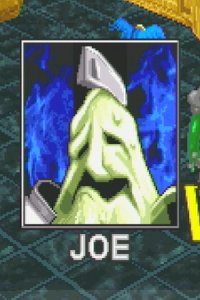 Where combat gets more interesting is with the capture mechanic. Garian is a bounty hunter after all, so he's able to capture his opponents as opposed to simply killing them. This mechanic is also pretty badly explained unfortunately, there's a single NPC that mentions it's something you can do but not how to actually do it, and while the manual tells you what to do when you get a capture chance, it still does not explain how to get that capture chance. Once you've got your opponent down to 20hp on their last round, hitting them with an attack that knocks them down to the ground will give you a capture chance for the duration that they are down. Fully charging up your special attack metre and then attacking during this capture chance will add the opponent to your party. Are they befriended? Enslaved? Blackmailed? Never explained, and while you can't recruit every opponent in the game, you can recruit most of them, including those you'd expect not to be able to. Major boss fights are frequently able to be captured, including former humans melted into acidic green slime, constantly in agonising burning pain and barely in control or lucid. This guy's name is Joe and I love him.
Where combat gets more interesting is with the capture mechanic. Garian is a bounty hunter after all, so he's able to capture his opponents as opposed to simply killing them. This mechanic is also pretty badly explained unfortunately, there's a single NPC that mentions it's something you can do but not how to actually do it, and while the manual tells you what to do when you get a capture chance, it still does not explain how to get that capture chance. Once you've got your opponent down to 20hp on their last round, hitting them with an attack that knocks them down to the ground will give you a capture chance for the duration that they are down. Fully charging up your special attack metre and then attacking during this capture chance will add the opponent to your party. Are they befriended? Enslaved? Blackmailed? Never explained, and while you can't recruit every opponent in the game, you can recruit most of them, including those you'd expect not to be able to. Major boss fights are frequently able to be captured, including former humans melted into acidic green slime, constantly in agonising burning pain and barely in control or lucid. This guy's name is Joe and I love him.
Once you have captured party members, you can send them out to fight in Garian's place in future battles, each captured character having their own stats and attack moveset. Garian remains a viable option throughout the whole game as he is the only one capable of using equipment, allowing him to keep up even as your opponents get gradually stronger and stronger. I didn't find myself using captures too much until the final parallel, partially because it took time for me to get a feel for it. Capturing is regardless very worthwhile even if you only play as Garian since you're given extra experience points for captures.
Experience is handled a bit unusually as well. In Dark Savior they are referred to as hunter points and they're not just for levelling up. Jack can heal you for 20 points and if you fall into a pit, water or lava then Jack will rescue you and carry you back to the last checkpoint at the cost of another 20 points. The less you get hurt and the better you do at platforming, the more points you'll conserve and the more you can level up. Level ups simply raise your max HP by 10 for Garian and all captured party members, by no means essential but still an appreciated safety net worth striving for. As it turns out, I'm terrible at video games, so I didn't level up much.
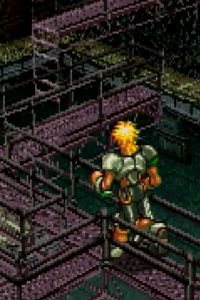 Platforming really is the core of gameplay here. Combat is pretty infrequent with the structure making them all feel akin to mini bosses as opposed to common enemies, especially since you can only fight each enemy encounter once, with the exception of those even rarer overworld bats. Dungeons frequently consist of long strings of precision platforming sequences all in that isometric style. For the most part, I found these sections, well, manageable. The camera and depth perception is a little wonky and the checkpoints can be a bit sparse so I wouldn't call them great, but generally the way forward is conveyed well enough and the jumping arc feels precise and easy to control. Your mileage may vary depending on how comfortable you are with isometric platforming, but I don't think what the game expects is unreasonable and can even be pretty satisfying, figuring out the routes forward and frequent potential shortcuts, encouraged directly in the intro since you're expected to cut corners to complete the intro quickly enough for parallel 2 and 3. So, platforming is fine, at least until the damn Silver Castle.
Platforming really is the core of gameplay here. Combat is pretty infrequent with the structure making them all feel akin to mini bosses as opposed to common enemies, especially since you can only fight each enemy encounter once, with the exception of those even rarer overworld bats. Dungeons frequently consist of long strings of precision platforming sequences all in that isometric style. For the most part, I found these sections, well, manageable. The camera and depth perception is a little wonky and the checkpoints can be a bit sparse so I wouldn't call them great, but generally the way forward is conveyed well enough and the jumping arc feels precise and easy to control. Your mileage may vary depending on how comfortable you are with isometric platforming, but I don't think what the game expects is unreasonable and can even be pretty satisfying, figuring out the routes forward and frequent potential shortcuts, encouraged directly in the intro since you're expected to cut corners to complete the intro quickly enough for parallel 2 and 3. So, platforming is fine, at least until the damn Silver Castle.
Say goodbye to checkpoints, Silver Castle is a brutal six-minute long stretch of sadism across small moving platforms and obstacle courses above a completely empty void where one single slip up means starting all over, all the while the camera is out for your blood, even requiring a few leaps of faith during a section where you need to drop down from small moving platforms to land on more small off-screen platforms below you. Alongside that, you also have crumbling platforms, spiked platforms that cause knockback and lengthy sections where the level design doesn't conform to the isometric grid-based layout that the rest of the game does, requiring you to zigzag northwest and southwest repeatedly to simply walk across the top of a horizontal wall since you can only move in those four diagonal directions. Silver Castle is an exhausting, draining slog of trial and error that I can imagine would be the straw that breaks the camel's back for people already not on board with the isometric platforming.
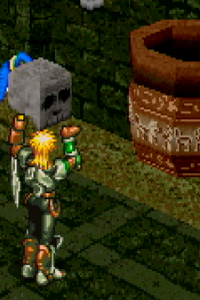 You're not only platforming through dungeons however, there's also puzzles to solve. I personally felt that the Golden Castle was a highlight of the game in terms of puzzles, involving using the basic mechanics in very creative ways. Such puzzles include lifting a block above your head to fill gaps in train tracks that a boulder is rolling across, figuring out the favourite animals of four girls via environmental clues in paintings in the castle, or reaching a destructible wall by using a movable trophy as a platform. The basic mechanics of picking things up and placing or throwing them is played with in a ton of creative ways throughout, as is the camera control. While Dark Savior is isometric like Landstalker, it takes advantage of the fact that it's a fully polygonal world by allowing you to pan and angle the camera around, thus allowing you to check what's behind walls that would of otherwise been obscured or get a better view of certain visuals such as the aforementioned paintings. Holding down the L button allows you to angle the camera with the d-pad, while the R button lets you pan the camera instead. Even more ideal is using an analog controller which is compatible with Dark Savior and allows you to control the camera with the analog stick while still being able to move with the d-pad. It’s by no means a perfect solution and can feel restrictive, but it’s still a welcome addition that more early 3D games with fixed camera angles like this could benefit from.
You're not only platforming through dungeons however, there's also puzzles to solve. I personally felt that the Golden Castle was a highlight of the game in terms of puzzles, involving using the basic mechanics in very creative ways. Such puzzles include lifting a block above your head to fill gaps in train tracks that a boulder is rolling across, figuring out the favourite animals of four girls via environmental clues in paintings in the castle, or reaching a destructible wall by using a movable trophy as a platform. The basic mechanics of picking things up and placing or throwing them is played with in a ton of creative ways throughout, as is the camera control. While Dark Savior is isometric like Landstalker, it takes advantage of the fact that it's a fully polygonal world by allowing you to pan and angle the camera around, thus allowing you to check what's behind walls that would of otherwise been obscured or get a better view of certain visuals such as the aforementioned paintings. Holding down the L button allows you to angle the camera with the d-pad, while the R button lets you pan the camera instead. Even more ideal is using an analog controller which is compatible with Dark Savior and allows you to control the camera with the analog stick while still being able to move with the d-pad. It’s by no means a perfect solution and can feel restrictive, but it’s still a welcome addition that more early 3D games with fixed camera angles like this could benefit from.
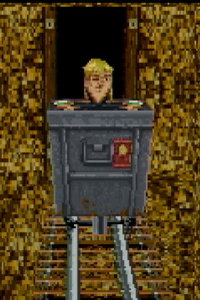 It’s not just puzzles and platforming either, you also have occasional minigames such as throwing skeleton heads (not skulls, the game specifically says “skeleton heads”) into a basketball hoop and the minecart sections which… oh my. Oh, this is absolutely adorable. Garian awkwardly shifting into a low-poly model that consists entirely of a cube with his face drawn on it with 2D arms painted onto the minecart, it looks absolutely terrible in the best way that I love in these kinds of early 3D games. It also thematically suits these sections too, because the minecart sections are also terrible. They basically play like the minecart levels in Donkey Kong Country, your only control is jumping and there’s gaps in the tracks that you have to hop over, but the camera is constantly swinging around the entire cart and seeming to very deliberately fight you by obscuring upcoming jumps you need to make until the last possible second, and once again they are very long and have no checkpoints. There’s only two minecart sections in the whole game thankfully, and I’m at least glad they’re here so I could experience the work of art that is low-poly Garian.
It’s not just puzzles and platforming either, you also have occasional minigames such as throwing skeleton heads (not skulls, the game specifically says “skeleton heads”) into a basketball hoop and the minecart sections which… oh my. Oh, this is absolutely adorable. Garian awkwardly shifting into a low-poly model that consists entirely of a cube with his face drawn on it with 2D arms painted onto the minecart, it looks absolutely terrible in the best way that I love in these kinds of early 3D games. It also thematically suits these sections too, because the minecart sections are also terrible. They basically play like the minecart levels in Donkey Kong Country, your only control is jumping and there’s gaps in the tracks that you have to hop over, but the camera is constantly swinging around the entire cart and seeming to very deliberately fight you by obscuring upcoming jumps you need to make until the last possible second, and once again they are very long and have no checkpoints. There’s only two minecart sections in the whole game thankfully, and I’m at least glad they’re here so I could experience the work of art that is low-poly Garian.
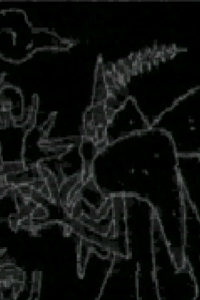 Now, let’s talk about the setting and themes more, as alongside the parallel system which this will lead further into, they’re absolutely what makes the game so engaging and fascinating to explore even through the jank and frustration. Jailer’s Island is a fascinating setting to explore with interesting characters and lots of dark secrets below the surface to uncover, such as the fall of an ancient civilisation, the science experiments ordered by the fascistic birthday-obsessed warden Kurtliegen III, or the two underground resistance groups fighting back against the cruelty dealt to them by the prison faculty, yet are at war with one another over conflicting ideology and plans for revolution. Many of the mechanics of the game serve world building as well as gameplay, from the trading-based currency system to the fact that Garian’s hunter points are awarded by the bounty hunter association he works for. Puzzles often also involve learning more about the setting in order to solve, with vital clues being contained in such flavour text. Garian and Jack also make for a very likeable and endearing duo with plenty of playful teasing and banter, with Garian especially demonstrating a surprising amount of empathy underneath his rough exterior, while also being extremely dorky and making dumb jokes like asking if the “D” in “Plan D” stands for “Dracula”. I also found myself appreciating the level of sympathy given to the prisoners and highlighting how awful and unfair their living conditions are and that no one deserves that level of suffering. It’s a world that I found myself constantly wanting to learn more about, my curiosity further encouraged by discovering plenty of alternate routes or puzzles that didn’t seem to lead anywhere, only to find out in later parallels that they come into play there and continue to show more sides of the setting we otherwise wouldn’t have seen.
Now, let’s talk about the setting and themes more, as alongside the parallel system which this will lead further into, they’re absolutely what makes the game so engaging and fascinating to explore even through the jank and frustration. Jailer’s Island is a fascinating setting to explore with interesting characters and lots of dark secrets below the surface to uncover, such as the fall of an ancient civilisation, the science experiments ordered by the fascistic birthday-obsessed warden Kurtliegen III, or the two underground resistance groups fighting back against the cruelty dealt to them by the prison faculty, yet are at war with one another over conflicting ideology and plans for revolution. Many of the mechanics of the game serve world building as well as gameplay, from the trading-based currency system to the fact that Garian’s hunter points are awarded by the bounty hunter association he works for. Puzzles often also involve learning more about the setting in order to solve, with vital clues being contained in such flavour text. Garian and Jack also make for a very likeable and endearing duo with plenty of playful teasing and banter, with Garian especially demonstrating a surprising amount of empathy underneath his rough exterior, while also being extremely dorky and making dumb jokes like asking if the “D” in “Plan D” stands for “Dracula”. I also found myself appreciating the level of sympathy given to the prisoners and highlighting how awful and unfair their living conditions are and that no one deserves that level of suffering. It’s a world that I found myself constantly wanting to learn more about, my curiosity further encouraged by discovering plenty of alternate routes or puzzles that didn’t seem to lead anywhere, only to find out in later parallels that they come into play there and continue to show more sides of the setting we otherwise wouldn’t have seen.
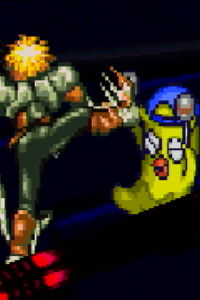 Of the parallels, I found myself enjoying Parallel 2 the most. It’s by far the longest parallel and contains the most satisfying story and final boss of the lot, good enough that it’s still worth trudging through Silver Castle at the end of it. Parallel 1 by contrast feels a bit anticlimactic and cut short, with many of the aspects that make the setting interesting glossed over, though you do get a very cool primary antagonist to fight throughout it. Parallel 3 is much shorter than even Parallel 1, but completing it is how you access Parallel 4, filled with a ton of game-changing revelations that work to tie everything together. Parallel 4 feels a bit rushed in a few ways but is still a fascinating story to play through. The gameplay, however…
Of the parallels, I found myself enjoying Parallel 2 the most. It’s by far the longest parallel and contains the most satisfying story and final boss of the lot, good enough that it’s still worth trudging through Silver Castle at the end of it. Parallel 1 by contrast feels a bit anticlimactic and cut short, with many of the aspects that make the setting interesting glossed over, though you do get a very cool primary antagonist to fight throughout it. Parallel 3 is much shorter than even Parallel 1, but completing it is how you access Parallel 4, filled with a ton of game-changing revelations that work to tie everything together. Parallel 4 feels a bit rushed in a few ways but is still a fascinating story to play through. The gameplay, however…
Parallel 4 is for anyone who thought that Silver Castle wasn’t hard enough. Heck, Silver Castle is the first dungeon of Parallel 4, you get to go through it all over again. Except this time, the entire parallel is on a time limit of 60 minutes, in which you are required to complete all of the four major dungeons from the second half of the game again while also fighting an onslaught of six new major bosses mixed in with plenty of returning bosses from the other parallels, some of which are made harder. The real kicker though? You can not save at all for the entirety of this hour-long gauntlet. And yes, losing a single battle during any of this is still an instant game over that kicks you back to the title screen, thus forcing you to sit through the unskippable intro to Parallel 4 all over again. I’d consider myself lucky in that this only took me two tries, I only died once to the penultimate boss of the parallel, but given that I was that close to finishing it that was still immensely crushing. It’s doable for sure, but the saving restriction and the time limit add a ton more stress, and gameplay wise it’s hard to feel like it’s really new content when it’s mostly just redoing dungeons with the exact same routes from Parallel 2.
Dark Savior is a very messy, frustrating game. I also enjoyed it a ton. I’d be lying if I said my investment in the story and setting wasn’t a huge part of my drive to keep playing, but even the gameplay remains fascinating to me as well. It tries so many unconventional things, combines all kinds of genres you’d never expect to fit together while also working as something of a spiritual successor and more modern reimagining not only of Landstalker but also isometric Euro puzzle platformers of the ZX Spectrum era like the aforementioned Head Over Heels. Not everything works, nor is everything fleshed out to its maximum potential, but together they all combine into something that plays like nothing else, with a ton of replay value to make experimenting with branching paths and routes extremely compelling. If everything I’ve said so far hasn’t scared you off and you enjoy experimental genre-busters, I absolutely recommend giving Dark Savior a shot if you think you have the patience for it.
You know, the themes did have this doll thinking about a lot of things. When he looks back on his life, all the choices, all of the chance events that lead to this point, the thought of so many timelines and parallel worlds branching wildly off from the slightest change in his actions, as the spiralling existential dread overwhelms him and he questions if he is not only living his best life but also living in the best world that he could of made for himself, he will look back on it all, every single twist and turn in his life that lead him to this point, and he will mutter under his breath to the starry sky…
- Page written by MSX_POCKY, 5th December 2023
